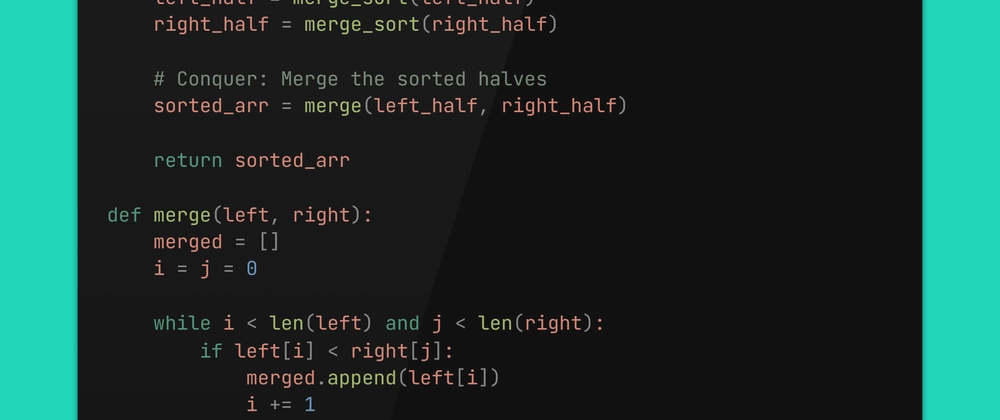The Divide and Conquer technique is a powerful strategy for solving complex problems by breaking them down into smaller, more manageable subproblems. It typically involves three steps: divide, conquer, and combine. This approach often leads to efficient algorithms with lower time complexity. Here's an example:
Example - Merge Sort in Python using Divide and Conquer:
def merge_sort(arr): if len(arr) <= 1: return arr # Divide: Split the array into two halves mid = len(arr) // 2 left_half = arr[:mid] right_half = arr[mid:] # Recursively sort each half left_half = merge_sort(left_half) right_half = merge_sort(right_half) # Conquer: Merge the sorted halves sorted_arr = merge(left_half, right_half) return sorted_arr def merge(left, right): merged = [] i = j = 0 while i < len(left) and j < len(right): if left[i] < right[j]: merged.append(left[i]) i += 1 else: merged.append(right[j]) j += 1 merged.extend(left[i:]) # Append remaining elements from left merged.extend(right[j:]) # Append remaining elements from right return merged # Example usage: my_list = [38, 27, 43, 3, 9, 82, 10] sorted_list = merge_sort(my_list) print(sorted_list) # Output: [3, 9, 10, 27, 38, 43, 82] In this example, we implement the Merge Sort algorithm using the Divide and Conquer technique. The array is divided into two halves, recursively sorted, and then merged together. Merge Sort's time complexity is O(n log n), making it an efficient sorting algorithm for large datasets.
Divide and Conquer can be applied to various problem domains, such as sorting, searching, and divide-and-conquer algorithms like quicksort and binary search. It's a powerful approach for efficiently solving complex problems by breaking them down into simpler subproblems.



Top comments (0)